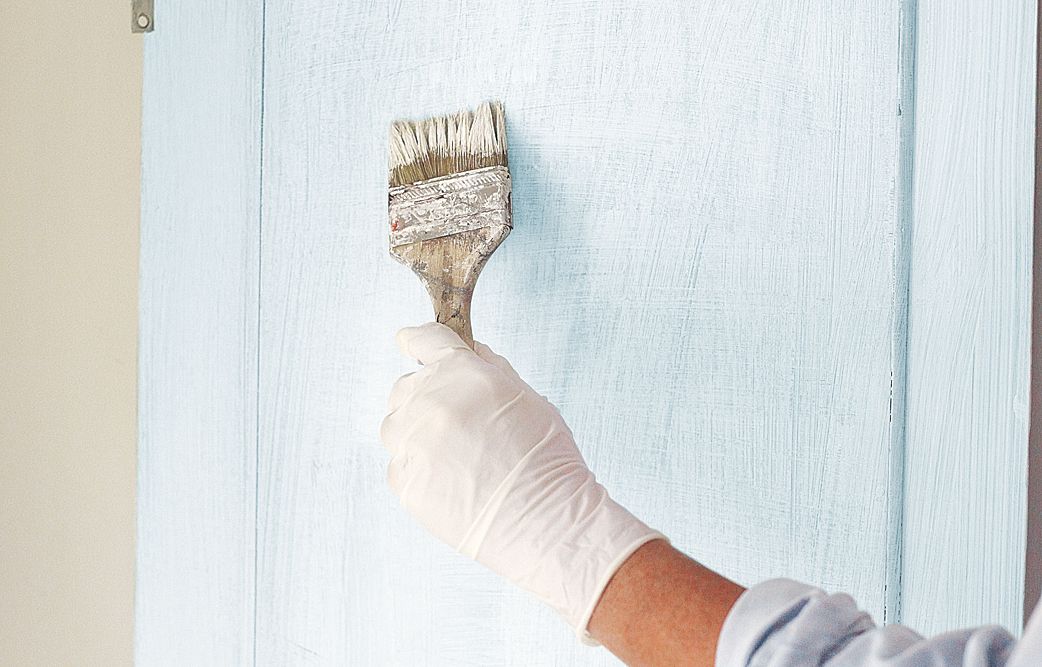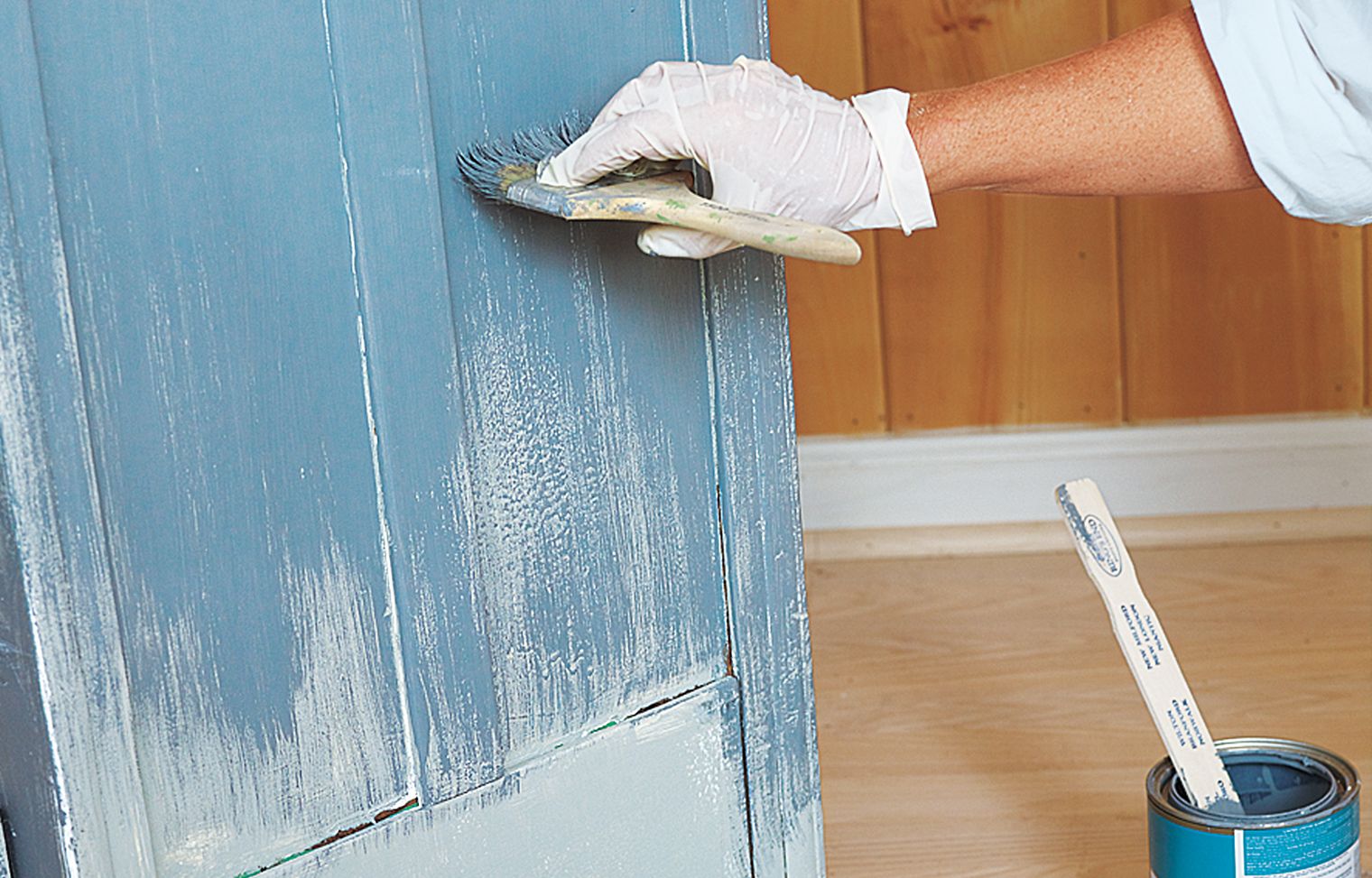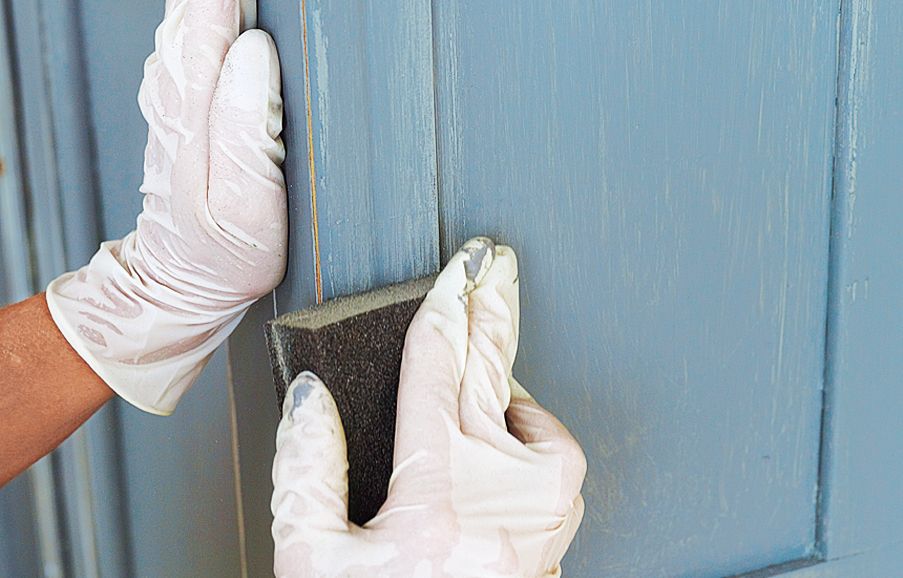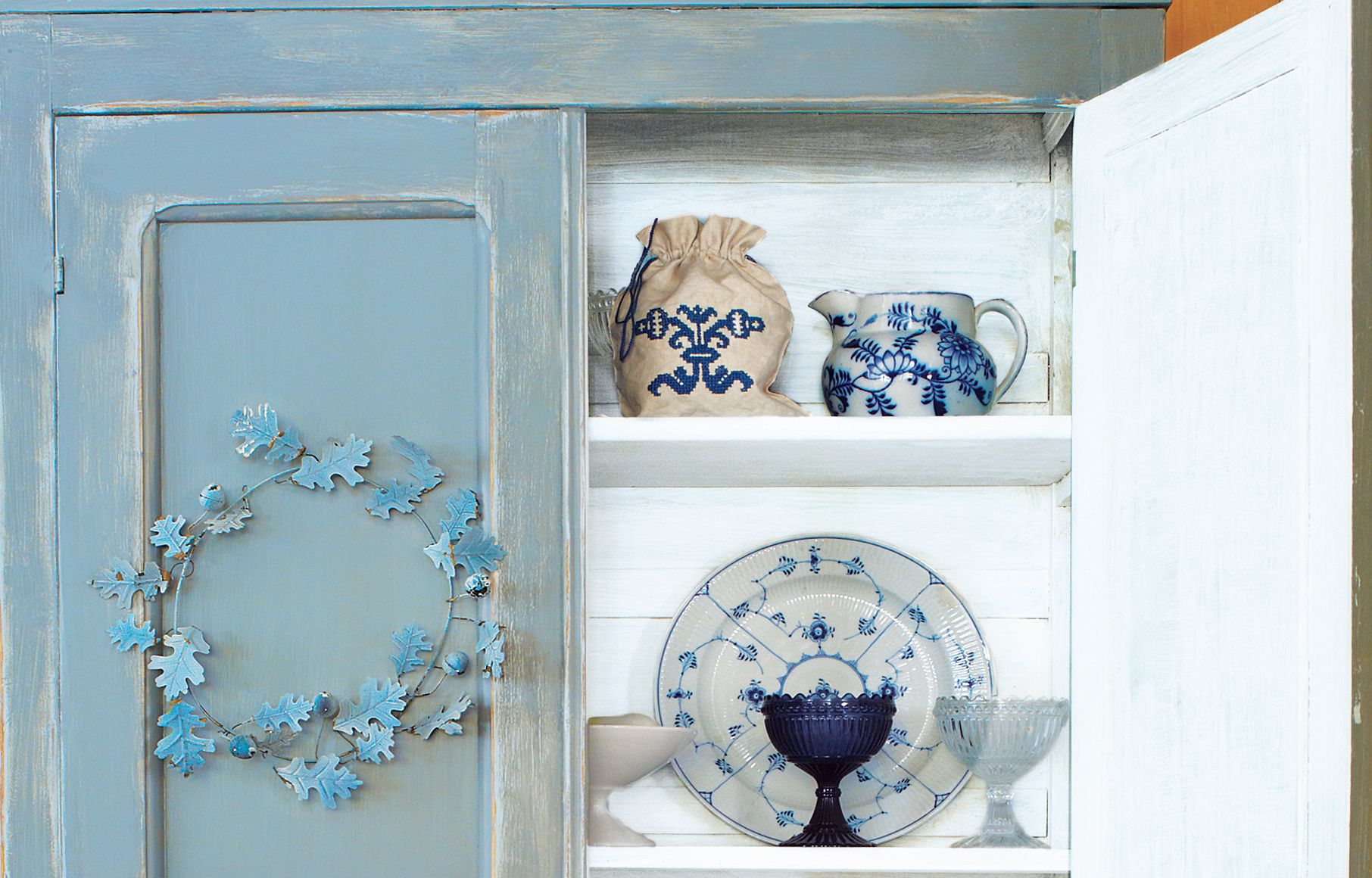 Medium-grit sanding sponge
Medium-grit sanding sponge Chip brush
Chip brush
We may be compensated if you purchase through links on our website. Our team is committed to delivering honest, objective, and independent reviews on home products and services.
Faux-aging painted wood furniture is a popular technique that adds character and charm to your home decor. This process creates the illusion of a well-loved, antique piece without the high cost or lengthy wait. By using simple tools and materials, you can transform a plain piece of furniture into a focal point with a rich, timeworn appearance. This guide will walk you through the steps to achieve a beautifully distressed finish on your painted wood furniture.
Understanding Faux-Aging Techniques
Faux-aging, also known as distressing, is a method of artificially creating an aged or worn appearance on furniture. This technique allows you to enjoy the aesthetic of vintage pieces while maintaining the structural integrity of newer items.
The Concept of Distressing
Distressing involves strategically damaging the surface of painted furniture to mimic natural wear and tear. This process typically includes sanding, chipping, and creating marks that would occur over time through regular use. The goal is to achieve an authentic-looking aged finish that adds depth and interest to your furniture piece.
Benefits of Faux-Aging
Faux-aging offers several advantages for homeowners and do-it-yourself (DIY) enthusiasts. It allows you to customize the look of your furniture to match your decor style, often at a fraction of the cost of purchasing genuine antiques. Additionally, this technique can breathe new life into outdated or plain pieces, giving them a second chance in your home’s design scheme.
Essential Tools and Materials for Faux-Aging
Before beginning your faux-aging project, gather the necessary supplies to ensure a smooth process and professional-looking results.
Paint Selection
Choose two colors of paint for your project: a base coat and a top coat. Typically, you use a lighter color for the base and a darker shade for the top coat. Opt for matte or flat finishes to enhance the aged look. Quality paints will provide better coverage and durability for your finished piece.
Sanding Equipment
A medium-grit sanding sponge is essential for creating the worn effect. This tool allows you to easily reach corners and contours where natural wear would occur. Sandpaper in various grits can also be useful for more detailed work or larger surfaces.
Additional Supplies
Other items you’ll need include the following:
- Chip brushes for applying paint
- Clean cloths for wiping surfaces
- Primer (if needed)
- Protective gear, such as gloves and a dust mask
Preparing Your Furniture for Faux-Aging
Proper preparation is key to achieving a successful faux-aged finish on your furniture.

Cleaning the Surface
Start by thoroughly cleaning the furniture piece to remove any dirt, grime, or oils that could interfere with paint adhesion. Use a damp cloth to wipe down the surface, and for particularly grimy pieces, consider using a degreaser. Allow the furniture to dry completely before proceeding.
Priming Considerations

In many cases, priming isn’t necessary when faux-aging furniture. As decorative painter Ingrid Leess points out, “It works best when there are finish details, like molding, which suggest the piece has a past.” Any imperfections in the surface can actually contribute to the authentic aged appearance you’re aiming to achieve.
Applying the Base Coat for Faux-Aging

The base coat serves as the foundation for your faux-aged finish and will peek through in areas where you distress the top coat.
Choosing the Right Color
Select a light color for your base coat that complements your overall design scheme. White or cream tones are popular choices as they mimic the look of bare wood or old paint when revealed through distressing.
Proper Application Techniques
Apply the base coat using a chip brush, working in the direction of the wood grain. Don’t worry about achieving a perfectly smooth finish—slight texture in the paint can add to the aged effect. Allow the base coat to dry completely before moving on to the next step.
Adding the Top Coat for Faux-Aging
The top coat will be the primary color visible on your finished piece, so choose a shade that fits your decor style.
Color Selection for Contrast
Pick a color that contrasts with your base coat to create depth when distressed. Darker colors often work well for achieving an antique look, but the choice ultimately depends on your personal preference and the style you’re aiming for.
Brushing Methods for Authenticity
Apply the top coat using short, erratic strokes with a chip brush. Keep the brush relatively dry to allow some of the base coat to show through, creating a naturally worn appearance. As Leess advises, “Be careful not to overload the brush.” Allow the top coat to dry completely, which typically takes about two days.
Distressing Techniques for Faux-Aging

The distressing process is where your furniture truly gains its aged character.
Sanding for Wear
Using a medium-grit sanding sponge, focus on areas where natural wear would occur, such as edges, corners, and around handles or knobs. Sand lightly at first, gradually increasing pressure to reveal more of the base coat or bare wood underneath. Work slowly and step back often to assess your progress.
Creating Authentic-Looking Chips and Scratches
To mimic deeper wear, use the edge of your sanding sponge or a piece of coarse sandpaper to create small chips or scratches in high-use areas. Be strategic in your placement to maintain a realistic aged appearance.
Further Techniques for Enhanced Aging
To add even more character to your faux-aged furniture, there are a few more techniques you can use to achieve different textures and appearances.
Using Wax for Depth
Consider using dark wax to add depth and dimension to your piece. Apply it sparingly over the painted surface and then wipe away the excess with a clean cloth. The wax will settle into crevices and details, giving the piece a more nuanced, aged look. This is especially effective on furniture with intricate carvings or moldings.
Layering Paint for Complexity
For a more complex aged effect, you can layer multiple colors of paint. Start with your base coat, apply a second color as your first top coat, and then add a third color. Distress each layer lightly to reveal the colors underneath. This technique can create a richly variegated look, suggesting multiple layers of paint applied over decades.
Crackle Medium for an Antique Finish
You can use a crackle medium to create a timeworn, cracked paint effect. Apply the crackle medium between your base coat and top coat. As the top layer dries, it will naturally crack and reveal the underlying color. This method is excellent for achieving a truly antique look on your faux-aged furniture.
Finishing Touches when Faux-Aging
The final steps in the faux-aging process can elevate your piece from good to great.
Enhancing Details With Glazes
Consider applying a glaze to enhance the aged look of your furniture. A dark glaze can settle into crevices and details, accentuating the piece’s character. Apply the glaze with a brush, then wipe away the excess with a clean cloth to control the intensity of the effect.
Sealing the Faux-Aged Finish
Unless your furniture will be exposed to moisture, it’s best to skip the clear coat. As noted in the original process, “Any added sheen just takes away from the aged look. ” However, if protection is necessary, opt for a matte finish sealer to preserve the distressed appearance.
Styling Your Faux-Aged Furniture
Once your faux-aged piece is complete, it’s time to incorporate it into your home’s decor.
Complementary Decor Ideas
Pair your newly aged furniture with items that enhance its vintage charm. Consider adding:
- Antique or reproduction hardware
- Rustic accents such as woven baskets or ceramic pottery
- Vintage-inspired textiles such as linen or burlap
- Weathered picture frames or mirrors
Placement Tips for Maximum Impact
Position your faux-aged furniture where it can serve as a focal point. Place it against a neutral wall to let its character shine, or use it to add warmth to a modern space for an eclectic mix of styles.



